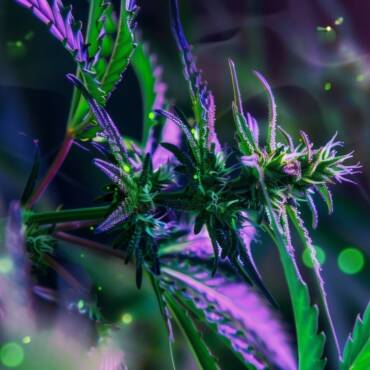7 Surprising Facts About CBD and CBG That You Might Not Know
Article by Britt Foster
Facts about CBD and CBG show up with increasing frequency as more people try them and more studies appear. CBD and CBG are different cannabinoids (compounds within the hemp plant), but they are often used to assist with the same conditions. Customers suggest that both CBD and CBG help with pain, inflammation, depression, anxiety, digestive problems, restlessness, neurological disorders, and more. Every person’s body responds differently to cannabinoids; some bodies like CBD better, others do better with CBG, and some do best with a combination of both CBD and CBG.
So if both CBD and CBG assist with the same conditions, what’s the difference between them? What are the similarities? Here are 7 surprising facts you might not know about CBD and CBG:
- CBG (cannabigerol) is considered the “stem-cell” of the hemp/cannabis plant and typically converts into CBD (or other cannabinoids) as the plant matures. All other cannabinoids, such as CBD or THC, begin as CBG-A.
- All cannabinoids exist in an acidic form before heat is applied and “activates” them. That’s what the -A stands for at the end of their name (such as CBG-A or CBD-A). For convenience’s sake, many people write about CBD and CBG without including the -A even when speaking about CBD and CBG that has not been activated. Testimonials suggest that activated cannabinoids are often more effective as medicinal supplements than non-activated cannabinoids.
- CBD is often more effective with conditions that are primarily physical/body related, and CBG is often more effective with conditions that are primarily mental/brain related. This is not always the case, however; many customers report that CBG is more effective against pain, and others say CBD is better for anxiety relief. Everyone’s body responds differently!
- CBG is helping treat symptoms of ASD, or Autism Spectrum Disorder. Customers report improvements with speech, behavior, mood, sleep, and more. Some customers even claim that patients who were previously nonverbal are speaking after taking CBG. Read more about CBD, Autism, and the immune system here.
- Both CBD and CBG are believed to support neurogenesis, which is the growth and development of nervous tissue/neurons in the brain. In other words, CBD and CBG have the potential to make the brain healthier!
- CBD and CBG are most effective when they are full-spectrum, whole-plant extracts. This means that the extract includes the plant’s original terpenes (the essential oils of the plant) and the naturally-occurring traces of other cannabinoids, such as CBD and THC. The terpenes and cannabinoids all work together to describe the entourage effect.
- All mammals have an endocannabinoid system, which is the body’s system for interacting with cannabinoids. The body naturally produces endocannabinoids to help regulate and balance physiological functions, but in today’s high-stress and high-toxin society, many people’s endocannabinoid system is depleted. CBD and CBG can fill in for the body’s naturally-occurring cannabinoids and thereby help balance the body’s functions. This is why CBD and CBG can help with such a wide range of health conditions!
Conclusion:
Both CBD and CBG are incredible compounds that help thousands of people for thousands of different reasons. Easily-accessible facts about CBD and CBG can help you understand why. Determining which is the best cannabinoid for your desired outcome takes some experimentation, but in most cases they work best when taken together. Full-spectrum, whole-plant products simplify the search because they naturally contain traces of both CBD and CBG. High-CBD products that are full-spectrum usually contain small amounts of CBG, and high-CBG products that are full-spectrum usually contain small amounts of CBD. Either way, CBD and CBG have lots of potential to help you improve your life!






